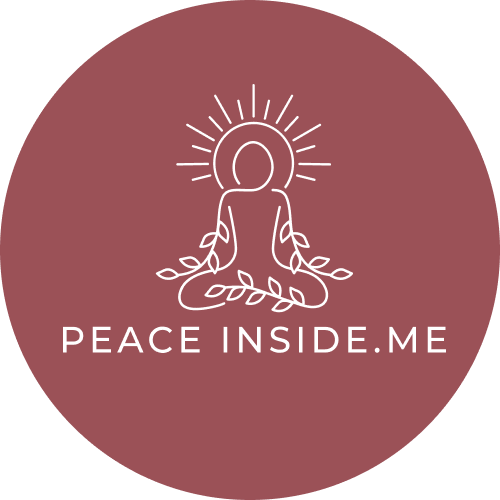peaceinside.me
The Archetypes In Tarot Cards & Jungian Psychology
Please note, this post is partially or fully sponsored and may contain affiliate links.
Tarot cards have been used for divination and self-reflection for centuries. They offer insights into our innermost thoughts and emotions, providing a powerful tool for personal growth and transformation. The images and symbols on the cards can be interpreted in a multitude of ways, and they often draw upon archetypes that are deeply ingrained in our collective consciousness.

Carl Jung And Archetypes
The Swiss psychiatrist and psychoanalyst Carl Jung was one of the pioneers of modern psychology, and he believed that archetypes were universal patterns of behavior and thought that were inherited from our ancestors. These archetypes are rooted in our deepest levels of the unconscious mind and can be seen in our dreams, fantasies, and creative expressions.
Jung saw the tarot as a tool for tapping into these archetypes and accessing the wisdom of the unconscious. He believed that the archetypes depicted in the cards could provide valuable insights into our personalities, motivations, and innermost desires.
The Major Arcana of the tarot deck is particularly rich in archetypal imagery. The 22 cards in the Major Arcana represent key archetypes and themes that are central to the human experience.
For example, The Fool represents the archetype of the free spirit, while The Magician embodies the archetype of the trickster.The High Priestess represents the archetype of the intuitive and mysterious feminine, while The Emperor embodies the archetype of the powerful and dominant masculine. The Hierophant represents the archetype of the spiritual teacher, while The Hermit embodies the archetype of the wise sage.
Jung believed that these archetypes were not just abstract concepts but were rooted in our personal experiences and relationships. He saw the tarot as a way of exploring these archetypes and uncovering their meaning in our own lives.
Kundalini Energy: Clearing the Channel for Deeper Readings
If you want to truly hear the cards—not just interpret them, but feel them speak through you—it’s essential to connect with the life force energy within. When your energy system is clear, unblocked, and flowing freely, you become a clean channel. Your intuition sharpens. The messages come through with ease, depth, and a sense of undeniable truth.
Practices like Kundalini Activation can support this. As the energy rises through the spine, it naturally stimulates the pineal gland—often referred to as the seat of spiritual vision or the “third eye.” Many experience heightened clarity, expanded awareness, and even spontaneous intuitive insights during or after a session. When your inner energy flows without resistance, your connection to the archetypes deepens—and tarot becomes less of a tool and more of a transmission.
The Swiss psychiatrist and psychoanalyst Carl Jung was one of the pioneers of modern psychology, and he believed that archetypes were universal patterns of behavior and thought that were inherited from our ancestors. These archetypes are rooted in our deepest levels of the unconscious mind and can be seen in our dreams, fantasies, and creative expressions.
Jung saw the tarot as a tool for tapping into these archetypes and accessing the wisdom of the unconscious. He believed that the archetypes depicted in the cards could provide valuable insights into our personalities, motivations, and innermost desires.
The Major Arcana of the tarot deck is particularly rich in archetypal imagery. The 22 cards in the Major Arcana represent key archetypes and themes that are central to the human experience.
For example, The Fool represents the archetype of the free spirit, while The Magician embodies the archetype of the trickster.The High Priestess represents the archetype of the intuitive and mysterious feminine, while The Emperor embodies the archetype of the powerful and dominant masculine. The Hierophant represents the archetype of the spiritual teacher, while The Hermit embodies the archetype of the wise sage.
Jung believed that these archetypes were not just abstract concepts but were rooted in our personal experiences and relationships. He saw the tarot as a way of exploring these archetypes and uncovering their meaning in our own lives.
Kundalini Energy: Clearing the Channel for Deeper Readings
If you want to truly hear the cards—not just interpret them, but feel them speak through you—it’s essential to connect with the life force energy within. When your energy system is clear, unblocked, and flowing freely, you become a clean channel. Your intuition sharpens. The messages come through with ease, depth, and a sense of undeniable truth.
Practices like Kundalini Activation can support this. As the energy rises through the spine, it naturally stimulates the pineal gland—often referred to as the seat of spiritual vision or the “third eye.” Many experience heightened clarity, expanded awareness, and even spontaneous intuitive insights during or after a session. When your inner energy flows without resistance, your connection to the archetypes deepens—and tarot becomes less of a tool and more of a transmission.

Active Imagination And Shadow Work With Tarot Cards
Active Imagination
One of the ways that Jungian psychology can be applied to the tarot is through the process of active imagination. Active imagination involves using the imagination to explore the unconscious mind, often through visualization or meditation.
By visualizing the archetypes depicted in the tarot cards, we can begin to understand their meaning and relevance in our own lives. For example, if we meditate on The Fool, we might be able to access our own sense of adventure and willingness to take risks.
Similarly, if we meditate on The High Priestess, we might be able to tap into our own intuition and connect with our inner feminine energy. By exploring the archetypes in this way, we can gain a deeper understanding of ourselves and our place in the world.
Shadow Work With Tarot Cards
Another way that Jungian psychology can be applied to the tarot is through the concept of the shadow. The shadow represents the parts of ourselves that we deny or repress, often out of fear or shame. These repressed parts of ourselves can manifest as negative behaviors, emotions, or thoughts.
The tarot can be used as a way of exploring the shadow and bringing these repressed parts of ourselves to light. By meditating on cards such as The Devil or The Tower, we can begin to confront our own fears and limitations.
In this way, the tarot can be a powerful tool for personal transformation and healing. By exploring the archetypes and confronting our shadow, we can gain a deeper understanding of ourselves and our place in the world.
Active Imagination
One of the ways that Jungian psychology can be applied to the tarot is through the process of active imagination. Active imagination involves using the imagination to explore the unconscious mind, often through visualization or meditation.
By visualizing the archetypes depicted in the tarot cards, we can begin to understand their meaning and relevance in our own lives. For example, if we meditate on The Fool, we might be able to access our own sense of adventure and willingness to take risks.
Similarly, if we meditate on The High Priestess, we might be able to tap into our own intuition and connect with our inner feminine energy. By exploring the archetypes in this way, we can gain a deeper understanding of ourselves and our place in the world.
Shadow Work With Tarot Cards
Another way that Jungian psychology can be applied to the tarot is through the concept of the shadow. The shadow represents the parts of ourselves that we deny or repress, often out of fear or shame. These repressed parts of ourselves can manifest as negative behaviors, emotions, or thoughts.
The tarot can be used as a way of exploring the shadow and bringing these repressed parts of ourselves to light. By meditating on cards such as The Devil or The Tower, we can begin to confront our own fears and limitations.
In this way, the tarot can be a powerful tool for personal transformation and healing. By exploring the archetypes and confronting our shadow, we can gain a deeper understanding of ourselves and our place in the world.

Sound As Medicine: Music For Third Eye Activation And Tarot Readings
In tarot work, sound can be the unseen ally—gently shifting brainwaves, opening portals of perception, and grounding the reading experience into the body. Music specifically attuned to the third eye chakra can enhance intuitive clarity, helping the imagery of the cards come alive in new ways. Whether you're pulling cards at your altar or facilitating a reading for someone else, soundscapes designed for deep presence can amplify the messages coming through.
🎧 For a more immersive experience, explore our YouTube channel featuring curated tarot reading music, and third eye activation tracks. These sonic journeys are crafted to quiet the mind, activate insight, and receive Devine messages and downloads.
In tarot work, sound can be the unseen ally—gently shifting brainwaves, opening portals of perception, and grounding the reading experience into the body. Music specifically attuned to the third eye chakra can enhance intuitive clarity, helping the imagery of the cards come alive in new ways. Whether you're pulling cards at your altar or facilitating a reading for someone else, soundscapes designed for deep presence can amplify the messages coming through.
🎧 For a more immersive experience, explore our YouTube channel featuring curated tarot reading music, and third eye activation tracks. These sonic journeys are crafted to quiet the mind, activate insight, and receive Devine messages and downloads.
Final Thoughts
Of course, it's important to note that the tarot should not be seen as a substitute for professional therapy or medical treatment. Rather, it should be used as a complementary tool to aid in personal growth and self-reflection.
Exploring the archetypes in tarot cards can provide valuable insights into our own personalities and motivations. By tapping into the wisdom of the unconscious, we can gain a deeper understanding of ourselves and our place in the world. Jungian psychology offers a framework for understanding these archetypes and their relevance to our lives, and the tarot provides a powerful visual representation of these archetypes.
Of course, it's important to note that the tarot should not be seen as a substitute for professional therapy or medical treatment. Rather, it should be used as a complementary tool to aid in personal growth and self-reflection.
Exploring the archetypes in tarot cards can provide valuable insights into our own personalities and motivations. By tapping into the wisdom of the unconscious, we can gain a deeper understanding of ourselves and our place in the world. Jungian psychology offers a framework for understanding these archetypes and their relevance to our lives, and the tarot provides a powerful visual representation of these archetypes.
Ultimately, tarot readings offers a fascinating window into the human psyche and the mysteries of the unconscious mind. By exploring the archetypes in tarot cards and gaining insights from Jungian psychology, we can unlock the wisdom and potential within ourselves and lead more fulfilling lives.
~
See a typo or inaccuracy? Let us know so we can fix it!
Sharing is caring ❤️
~
~
~
BECOME A PEACE INSIDER
Sign up for peaceinside.me information, inspiration, and specials.



